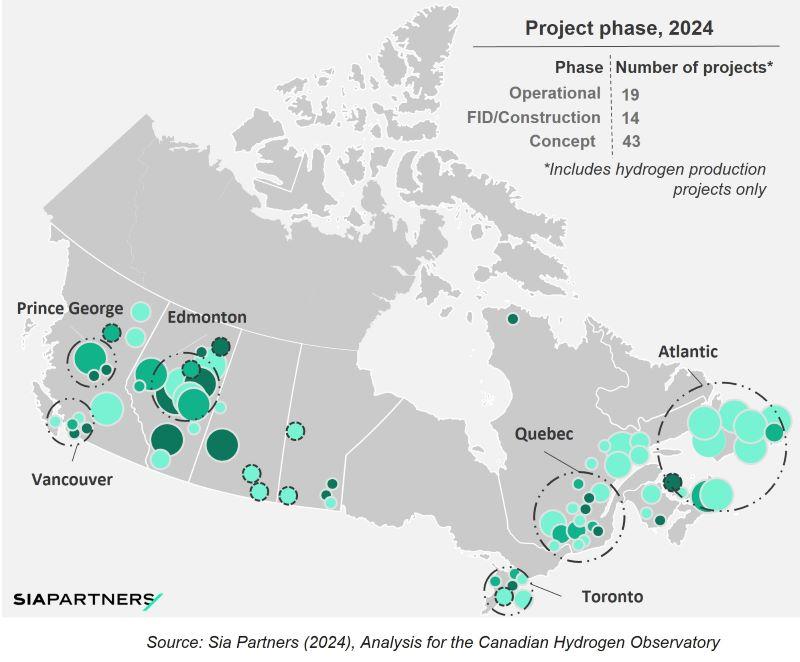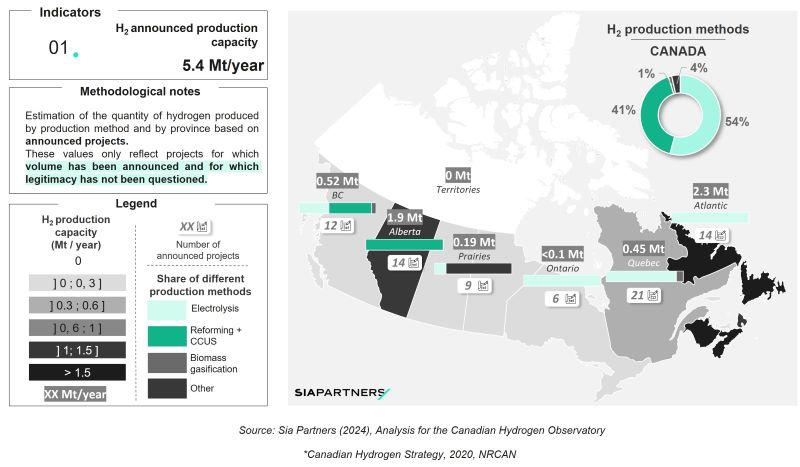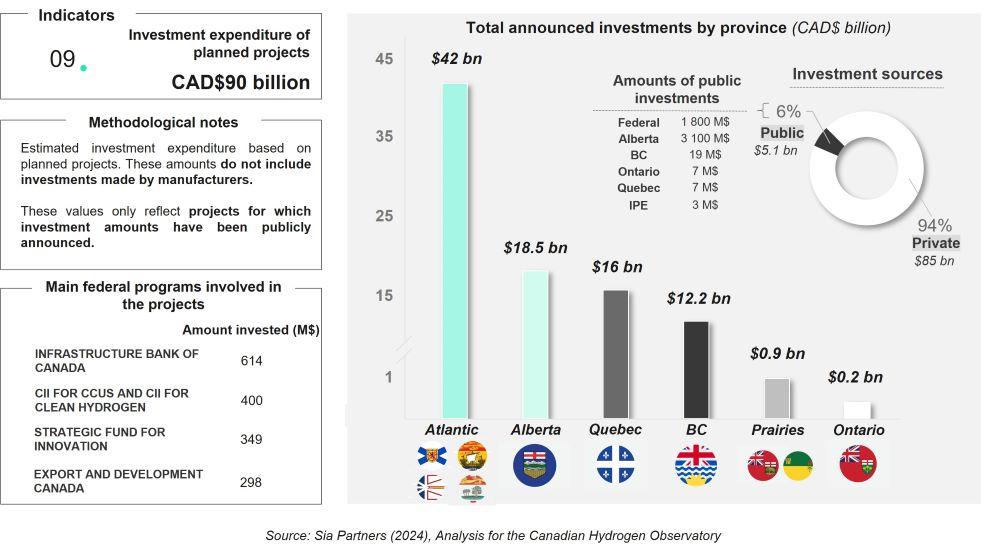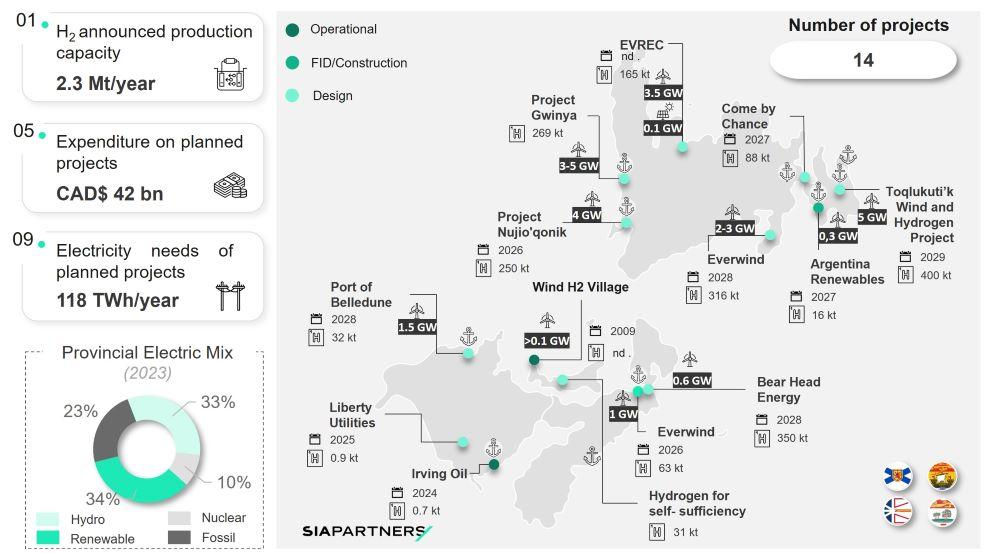Global Investment Application Benchmark 2025

With 94 announced projects and 5.4 Mt of potential H2, Canada is poised to become one of the world's leading producers of hydrogen (H2) dedicated to the decarbonization of no-regrets sectors: steel, green chemistry and refineries.

Low-carbon H2 production projects are emerging and taking shape across Canada, enabling the development of H2 hubs where projects that provide a response to the energy transition challenges of sectors that are difficult to electrify, such as industry and heavy mobility, are concentrated.

The progress of this sector will be driven in particular in Canada by major regulations that support the sometimes complicated business models associated with these projects. Updating the project phases from year to year will enable us to track the progress of announced projects and identify the levers that have enabled their development.
Given the country's assets - land, low-cost, low-carbon electricity, etc. - the H2 dynamic in Canada looks very promising: many projects and public support have been announced, and ecosystems are being created in the East and West.
Nevertheless, the lack of visibility and reliable data - due in particular to the effects of announcements - makes it difficult to navigate the industry and understand future developments. The Canadian H2 Observatory offers a detailed analysis of the 94 projects in Canada, with a capacity equivalent to 5.4 Mt of H2, the associated uses and the resources required to scale up.

Cumulative project investments are expected to exceed 3% of current Canadian GDP, or CAD 90 billion. Of these announced investments, over 95% are of private origin for the time being. The remaining 5% of public funding comes mainly from private provincial sources, but large-scale federal investment is expected over the next few years.

In view of the strong regional specificities, we have focused on provincial developments. In the East, the majority of projects revolve around electrolysis and ammonia production for export to Europe, particularly in the Atlantic provinces.

In the West, the majority of projects focus on H2 production technologies based on reforming coupled with CUSC. Find out more about each province in the study.